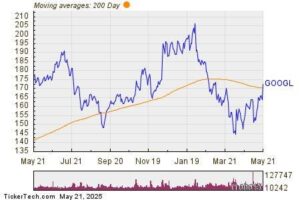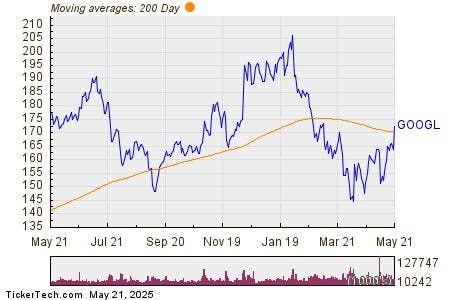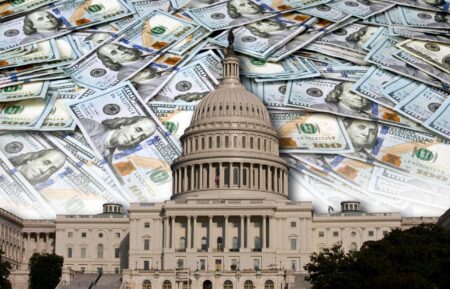I believe the U.S. economy is at a precarious crossroads. Growth is slowing faster than expected, inflation remains stubbornly high, and fiscal imbalances are becoming harder to ignore. For investors, policymakers, and households alike, this moment demands sharp focus and decisive action. The risks of stagflation—a toxic combination of rising unemployment and persistent inflation—are no longer theoretical. They’re knocking at the door.
Let’s break down the key challenges shaping this precarious moment and what they mean for the road ahead.
Growth Is Losing Momentum – Fast
The February Personal Consumption Expenditures report delivered a sobering reality check: U.S. economic growth is decelerating more quickly than anyone anticipated. Wage and salary compensation have fallen below trend rates for the first time since March 2021, signaling cracks in the labor market that are hard to ignore.
Immigration, a critical driver of workforce expansion, is slowing dramatically. This isn’t just a short-term issue—it’s a structural problem that will weigh on nonfarm payrolls in the months ahead. While housing activity remains surprisingly strong, with residential construction payrolls at cycle highs, it’s clear that these isolated bright spots won’t offset broader economic headwinds (Trading Economics).
The bottom line? A cooling labor market means less disposable income for consumers to spend, which could drag growth lower in the coming quarters.
Inflation Isn’t Going Away
For those hoping inflation would ease as growth slows—think again. The February PCE data suggests inflationary pressures are not only persistent but could accelerate further in the near term. This raises the specter of stagflation; a scenario where rising prices collide with a weakening economy.
Tariffs and geopolitical tensions are exacerbating these pressures by driving up production costs across industries. Corporate earnings are already feeling the squeeze, with semiconductor stocks flashing warning signs of slower sales—a troubling indicator for tech-heavy sectors that have been key drivers of growth in recent years (KPMG).
For households, higher prices are eroding purchasing power, forcing tough choices on spending priorities. This dynamic creates a vicious cycle: weaker consumption leads to slower growth, which in turn makes it harder to tame inflation without triggering deeper economic pain.
A Fiscal Cliff Looms
If inflation and slowing growth weren’t enough to worry about, fiscal policy presents its own set of challenges. Government transfer payments surged by 18% on a three-month annualized basis, temporarily boosting disposable income. But this fiscal sugar rush masks deeper structural issues that can’t be ignored.
Treasury Secretary Scott Bessent recently stated that America has a spending problem – not a revenue problem. He may be spot on, because government revenues as a percent of GDP are near long-term trends, but government spending far exceeds those trends. Spending on politically protected programs, like Medicaid, now exceeds total federal revenue. With debt-to-GDP ratios at 112% and deficits-to-GDP at 7%, the U.S. is on an unsustainable fiscal trajectory.
Bond markets are starting to take notice. Yields are biased higher as investors demand greater compensation for holding U.S. debt amid mounting structural imbalances. Budgetary gimmicks may buy time politically, but they won’t fool bondholders who see through short-term fixes.
The risk? Advancing deficit-expanding legislation during what Darius Dale at 42 Macro is calling potentially a “self-inflicted technical recession” could push borrowing costs even higher—tightening financial conditions further at precisely the wrong time.
Markets Are Sending Mixed Signals
Credit markets offer conflicting clues about where we’re headed next. Credit spreads have widened slightly but remain below levels typically seen before recessions. Historically, 10% corrections have been buying opportunities absent a recession — but I think this time feels different.
The recent $4 trillion drop in household net worth underscores how quickly wealth effects can reverse consumption trends (Reuters). Stock market rallies have propped up spending in recent years, but retrenchments like this one remind us how fragile consumer-driven growth really is.
President Donald Trump’s declaration of April 2 as “Liberation Day” may aim to inspire confidence, but global markets exposed to U.S.-centric risks could interpret it as a red flag rather than a rallying cry. The interplay between stock market volatility and consumer sentiment will be critical to watch in the months ahead.
What Investors Should Watch For
In times like these, staying informed isn’t just smart, it’s essential. Here are four key areas investors should monitor closely:
- Labor Market Trends: Declines in nonfarm payrolls or upticks in unemployment claims could signal deeper economic trouble ahead.
- Inflation Data: Upside surprises in CPI or PCE reports could force the Federal Reserve to reconsider tightening.
- Fiscal Policy Developments: Watch for any new deficit-expanding legislation or shifts in Treasury issuance plans.
- Corporate Earnings: Weakness in sectors like semiconductors or consumer discretionary could act as early warning signs for broader equity markets.
The Bottom Line
This is not a moment for complacency. The U.S. economy faces significant risks that require vigilance from both policymakers and investors. Slowing growth, persistent inflation, unsustainable fiscal policies, each of these challenges alone would be difficult to manage. Together, they create a precarious situation that demands immediate attention.
For policymakers, addressing structural weaknesses like immigration reform and entitlement spending is no longer optional, it’s imperative. For investors, caution is warranted as markets navigate an environment fraught with uncertainty.
The road ahead won’t be easy, but moments like these also present opportunities for those who stay informed and prepared. As always, vigilance and adaptability will be key to navigating what lies ahead.
Read the full article here











